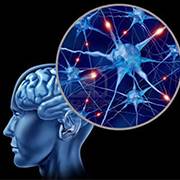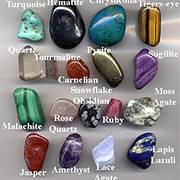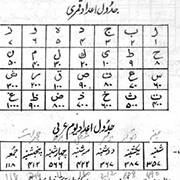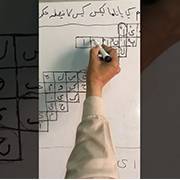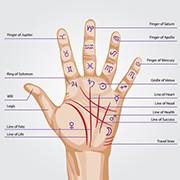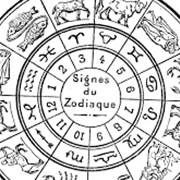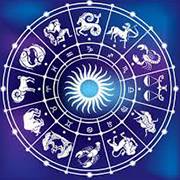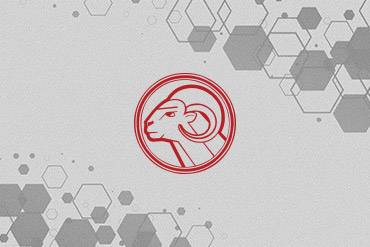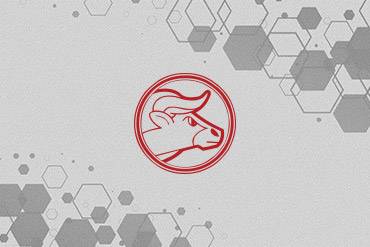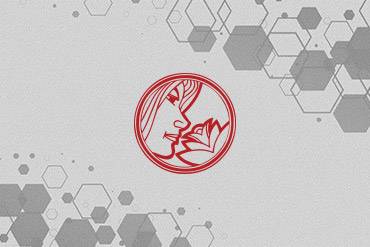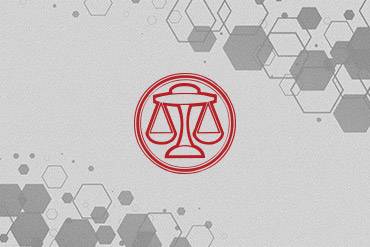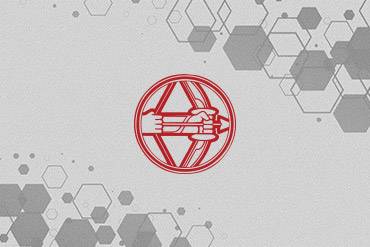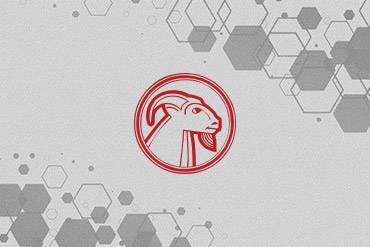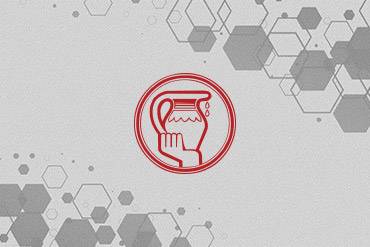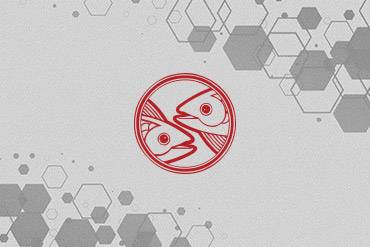Brahmins Fought for Imam Hussain (A.S) in the Battle of Karbala :
The presence of hindus in Arabia, mostly Brahmans, before the advent of Islam, has been recorded by the historian Sisir Kumar Mitra, in his book “The Vision of India”. page 183. These people observed Hindu religious customs, including the worship of Shiva and “Makresha” from which the name of Mecca is said to have been derived. As one of the 360 idols of kaba was from Indi. The famous Astrologer Ya van acharya was born in one such Brahman family from whom The Arabs learnt the science of Mathematics, Astrology, Algebra and decimal notation which were first developed in India. It is also a consider history that many Indian traders were frequently traveling to mecca, madina and other Arabian areas and some of them who accepted Islam on the hand of prophet Muhammad(peace be upon him and on his children) were called sahabis. Qazi Muhammad Hussain thathvi wrote in his book “history of islam in sindh” that the islam was initially entered by those Indian sahabies of Rasool Allah(peace be upon him and on his children) he also narrates that Rasool Allah was very kind and loving to them and once sarkar Rasool Allah said “adda idhar aa” (o brother come here) to his sahabi veer virinder named Obaid e Sindhi after accepting Islam. It shows his immense love towards his indian sahabis. Qazi sana ullah pani patti also told about 23 people from India who spent time with prophet, after accepting Islam.
A Brief Account of the Episode: After the death of Muhammad(peace be upon him and on his children), he was succeeded by Abu Bakar (R.A), Omar (R.A) and Osman (R.A) , as the Caliphs. Osman (R.A) was not popular amongst the masses and was assassinated. After his death, Hazrat ALI (A.S) the son-in-law of Mohammed (peace be upon him and on his children), he was also first cousin of Prophet Muhammad, and was married to the Prophet’s daughter Bibi Fatima Zahra (S.A), became the 4th Caliph. There was a bitter opposition to Ali’s rule from Moavia ibn e Abu suffyan, a known protégé of Osman (R.A). He fought a bitter war with him for 5 years and finally got him martyred in a mosque of Koofa. Ali (A.S) mausoleum with a golden dome stands in the nearby town of Najaf (Iraq). After the extermination of Ali (A.S), Moavia grabbed the Caliphate and converted the Islamic state into a kingdom. After his death, his notorious son Yazid became the next ruler. However, the rightful claimants of the Caliphate were the descendants of Hazrat Ali (A.S), namely, Hassan (A.S) and Hussain (A.S).
While Hassan(A.S) abdicated his claim to the crown and later died of suspected poisoning by these enemies, his younger brother Imam Hussain (A.S) who was till then leading a secluded life in Medina, came out and challenged the usurper, Yazid. Who was ruling Islamic state by cruelty and making unauthorized changes in Islamic fundamentals, converting haraams into halaal and halaal into haraam, making fun of basic ideology of Islam, crushing the faithful personalities of islam to make his rule strong.
As imam Hussain (A.S) was the biggest hurdle in the way of his evil agenda, he decided to kill imam Hussain (A.S) he left no stone unturned to get support from imam hussain (A.S) but when he got failed he sent murderers to kill imam Hussain (A.S) in madina and mecca. Imam left madina and mecca, start moving towards koofa. Yazid sent a huge army to fight with imam (A.S) who was traveling with his family, sisters, sons and daughters.
It was the war of attrition between the two ideologies of life (evil and virtue) which led to the bloodshed of Karbala (102 km south of Baghdad), on Oct. 10, 680 AD, Moharram 10th 61st Hijri.
Hindu followers of imam Hussain (A.S):
According to Sisir Kumar Mitra, in his book “The Vision of India”. page 185,” At the time of the war of Karbala (Oct. 680 AD). A Rahab Sidh Datt, a potentate of Datt sect, was a highly esteemed figure of Arabia due to his close relations with the family of Prophet Mohammed (peace be upon him and on his children). In the holy war when no Muslim King came to help Hussain (A.S). Rahab fought on his side and sacrificed his seven sons (named Sahas Rai. Haras Rai, Sher Rai, Rai Pun, Ram Sidh, Dharoo and Poroo) in the bloody war.”
The participation of the Mohyals Brahmins and more precisely that of a Dutt family living in Arabia at that time, in the holy war, is a fact of the history. They were a part of the entourage of 200 men and women, including 72 members of imam Hussain’s family (40 on foot and 32 on horseback), when he left Medina and made an arduous trek to Karbala, where he had a large friendly following. After 18 days, i.e. on the 2nd, Day of Mohurrum, the imam Hussain’s caravan reached Karbala, on the bank of river Euphrates. He purchased (nine square miles) for a high price of 70000 dinars. Next day he surrounded by an Army of 5000 lead by Hur bin yazid riyahi in the hostile desert.
On the 7th day of Mohurrum, all hell broke out when 90,000 strong army sent by Yazid from Mecca and other places, attacked them. 16,000 soldiers guarded the river bank to ensure that not a drop of water reached the imam Hussain’s thirsty innocents. By sunset of 10th (Ashoor), a Friday, all were dead including his brother Abbas (A.S) (32of age), his son Ali Akbar (A.S) (22of age) and 6 months old infant Ali Asghar (A.S) who was killed by a most vicious arrow (with three spears) while perched in his lap. Imam Hussain (A.S) himself was slain with thirteen strokes of lances and swords by Shimar, the hatchet man of ignominious Yazid.
According to legend, the ruffians of Yazid, as they ran carrying the smitten head of Hussain (A.S) to the castle of Koofa, were chased by Rahab. He retrieved the holy man’s head, washed it reverentially but he was overtaken by Yazid’s men in the way. They demanded imam Hussain’s head from him. Rahab executed the head of one of his sons and offered to them. They shouted that it was not the Hussain’s head, then he beheaded his second son and they again yelled that it was not his. In this way Rahab executed the heads of his seven sons but did not part with the head of Imam Hussain. At last he got killed by the yazid’s army, and then they found imam hussain’s head. They also picked up the heads of those 8 martyrs of karbala and Later, after one year, those was buried in Karbala along with rest of their bodies.
The intrepid Datts rallied round Amir Mukhtar, the chief of the partisans of Imam Hussain (A.S), fought with extraordinary heroism and captured and razed the fort of Koofa, the seat of Yazid’s governor, Obaidullah ibn e zyad, (the Butcher). After scoring a resounding victory on the battle field, they beat the drums and yelled out that they had avenged the innocent blood of Hussain (A.S) shed at Karbala.
It is also significant to note that even before the Karbala incident, Hazrat Ali had entrusted the public exchequer to the regiment of the valiant Datts, at the time of the Battle of Camels fought near Basra and the battle of neharwaan.
After Rahab and those of his sons who survived the battle of Karbala reached India, they settled down in the western Punjab and gradually a community grew around them. The Hussaini Brahmins practiced an intriguing blend of Islamic and Hindu traditions.
A popular saying refers to the Hussaini Brahmins or Dutts thus:
Wah re Dutt Sultan,
Hindu ka Dharm
Musalman ka Iman,
Adha Hindu Adha Musalman
Oh! Dutt, the king
[Who follows] the religion of the Hindu
and the faith of the Muslim
Half Hindu, half Muslim.
The above provides impeccable evidence about that pragmatic role played by the Datt Mohyals in the catastrophe of Karbala. There are more than a dozen ballads composed centuries ago which vividly and with great passion describe the scenario of the historic event.
In the Preface of a famous historical novel by Munshi Prem Chand, titled “Karbala”, published in 1924 from Lucknow, has stated that the Hindus who fought and sacrificed their lives in the holy war of Karbala, are believed to be the descendants of Ashvathama (hero of “maha bharata”).This clearly establishes their link with the Datts who consider Ashvathama as an ancestor of their clan.
According to “vide Bandobast Report of Gujarat” by Mirza Azam Beg page 422 and widely famous folk songs, “Later on, when umvies and abbasies let loose an orgy of vendetta on Ahl e Bayet (A.S), Shias and Datts, then Datts returned to their motherland around 700 AD and settled at Dina Nagar, District Sialkot and some drifted to as far as the holy Pushkar in Rajasthan. Starting from Harya Bandar (modern Basra on the bank of river Tigris) with swords in hand and beating durms, they forced their way through Syria and Asia Minor and marching onwards captured Ghazni, Balkh and Bukhara. After annexing Kandhar, they converged on Sindh and crossing the Sindh at Attock they entered the Punjab”.
An ancestor of Rahab named Sidh Viyog Datt assumed the title of Sultan and made Arabia (old Iraq) his home. He was a tough and tenacious fighter.
He was also known as Mir Sidhani. He was a worshipper of Brahma. He was the son of the stalwart Sidh Jhoja (Vaj) who was a savant and saint and lived in Arabia (Iraq) around 600 AD.
The supporters of imam Hassan (A.S) and imam Hussain (A.S) honored the Datts with the title of “Hussaini Brahmin” and treated them with great reverence in grateful recognition of the supreme sacrifices made by them in the war of Karbala. According to Jang Nama, written by Ahmed Punjabi, pages 175-176, “At the time to the Karbala, fourteen hundred Hussaini Brahmins lived in Baghdad alone”
According to the “encyclopedia of Indian casts” page 579 “Hussaini Brahmins are a group bringing harmony and brotherhood between Muslim and Hindu religions. They are greatly influenced by martydom of Imam Hussain (A.S), grandson of Prophet Muhammad(peace be upon him and on his children), at Karbala in 680 AD. It is also claimed that their ancestors were fought with imam Hussein and martyred during the war of karbala. When the holy month of Muharram starts these Brahmins starts lamenting the death of Imam Hussain (A.S) in Lucknow with the muslims. Brahmins are the highest caste in Hindu hierarchy”
The Hussaini Brahmin sect, located mostly in Indian Punjab, also known as Dutts or Mohyals. Unlike other Brahmin clans, the Hussaini Brahmins have had a long martial tradition, which they trace back to the event of Karbala.
Some Mohyal Brahmins migrated eastward and became as some sub-divisions of Bhumihar Brahmins, some of whom are also descendants of Hussaini Brahmins and mourn the death of Imam Hussain (A.S). An eminent example was Sir Ganesh Dutt Singh. Sir Ganesh Dutt Singh, who was a freedom fighter, administrator and educationist in which capacity he did a lot for improving education and health services in the state of Bihar in the pre-independence era. Sir Ganesh Dutta made generous donations from his earnings and personal property for the development of educational institutions, like radium institute in Patna Medical College, Darbhaga Medical College, Ayurvedic College and schools for the blind, deaf and dumb, among others. A short film based on the life and works of Sir Dutt has been made by Prakash Jha. His essays, articles and books etc, clearly show his love towards imam hussain (A.S).
According to a Hindu news paper “Par tap(English)” 21 April 1949
“The Hussaini Brahmins are concentrating in “satghara katas” (the Rawalpindi-Jhelum regions of Pakistan) for the mourning of the muslim imam “hussain” (A.S). According to the traditions, the Hussaini Brahmins believe that their ancestor Rahab Dutt and his sons fought on the side of Imam Hussain (A.S) at Karbala and they were martyred along with the Imam. They remained Hindus but the tragedy of Kerbala was commemorated from generation to generation in their families and even now their clans observe it all over India, although the younger generation is less keen on such traditions”.
What is particularly striking about the observances of the month of Muharram in large parts of India is the prominent participation of Hindus in the ritual mourning. In several towns and villages, Hindus join Muslims in lamenting the death of Hussain (A.S), by sponsoring or taking part in lamentation rituals and taazia processions. In Lucknow, seat of the Shia nawabs of Awadh, prominent Hindu noblemen like Raja Tikait Rai and Raja Bilas Rai built Imambargahs to house Alams, standards representing the Karbala event.
The non-Muslim tribal Lambadi communities in Andhra Pradesh have their own genre of Muharram lamentation songs in Telugu. Among certain Hindu castes in Rajasthan, the Karbala battle is recounted by staging plays in which the death of Imam Hussain(A.S) is enacted, after which the women of the village come out in a procession, crying and cursing Yazid for his cruelty. This custom is known as “Pitna Daalna”.
In large parts of rural India, Hindus believe that if barren women slip under a Moharrum Alam they would be blessed with a child.
Another story, which seems reliable (but no strong historic avidence is found yet to prove it completely), is related as to how the Dutts of Punjab came to be known as Hussaini Brahmins. According to this version, one of the wives of Imam Hussain(A.S), the Persian princess bibi Shahr Banu(A.S), was the sister of “Chandra Lekha” or “Mehr Bano”, the wife of an Indian king called Chandragupta famous as “raja jaisalmer”.
When it became clear that Yazid was adamant on killing the Imam Hussain (A.S), and “Raja jaisalmer” received the information regarding this, he came to Iraq with a large army to assist the Imam Hussain (A.S). By the time they arrived, however, the Imam (A.S) had been slain. In the town of Kufa, in Iraq, he attacked Damascus the capital of yazid and got martyred by yazeed army however Imam Ali ibn al Hussain (A.S), known as zain ul Abideen, made them alive by the grace of Allah. They went back gathered their army, met with Mukhtar Saqaffi, (a disciple of the Imam(A.S)), who arranged for them to stay in a special part of the town, which even today is known by the name of Dair-i-Hindiya or ‘the Indian quarter’.
Some Dutt Brahmins, under the leadership of one Bhurya Dutt, got together with Mukhtar Saqafi to avenge the death of the Imam. They stayed behind in Kufa, while the rest returned to India. Here they built up a community of their own, calling themselves Hussaini Brahmins, keeping alive the memory of their links with the Imam (A.S).
The Hussaini Brahmins believe that in the “Bhagwadgita” Krishna had foretold the event of the Imam’s death at Karbala. According to them, the Kalanki Purana, (the last of eighteen Puranas), as well as the Atharva Veda, the fourth Veda, refer to Imam Hussain(A.S) as the divine incarnation or avatar of the ”Kali Yug”, the present age. They hold Rasool Allah, in particular reverence, referring to him as “MAHA DEV MAHA MADD” (greatest God) and Imam Ali (A.S), (Imam Hussain’s father, and son-in-law and cousin of the Prophet Muhammad(peace be upon him and on his children)), with the honorific title of ‘Om Murti’. (God’s face).
They also believe that in “ramaayana” “SIRI RAAM JI” told about the birth of Prophet MUHAMMAD (peace be upon him and his children).
Uttar ramaayana says “Siri RAAM said! Behold! that after 4000 years there would be a revelation of a “dev atee dev” (GOD of the gods) near the world’s greatest temple of black stone (kaba) in the land of dates, his name would be “MAHA DEV MAHA MADD” his greatest disciple “OM MURTI (God’s face) shall miraculously revealed beyond the black stone temple. His daughter “DURGA” will get married with “OM MURTI” known as Lion of God and they will have two lions one of them will be martyred on a river bank however he would be thirsty for three days”
Though other Hindus do not believe that it is said for Prophet Muhammad(peace be upon him and his children) but The Hussaini Brahmins observe it like Muslim beliefs.
The Hussaini Brahmins, along with other Hindu devotees of the Imam Hussain (A.S), are today a rapidly decreasing. Younger generation of Hussaini Brahmins are said to be abandoning their ancestral heritage, some seeing it as embarrassingly deviant.
No longer, it seems, can an ambiguous, yet comfortable, liminality be sustained, fuzzy communal identities giving way under the relentless pressure to conform to the logic of neatly demarcated ‘Hindu’ and ‘Muslim’ communities. And so, these and scores of other religious communities that once straddled the frontier between Hinduism and Islam seem destined for perdition, or else to folkloric curiosities that tell of a bygone age, when it was truly possible to be both Hindu as well as Muslim at the same time.
Author: Syed Haider Jafri




